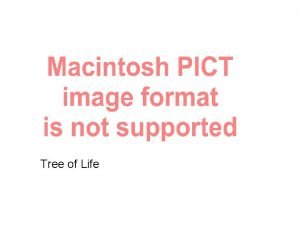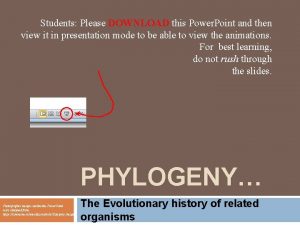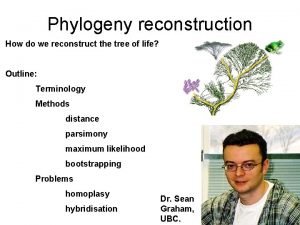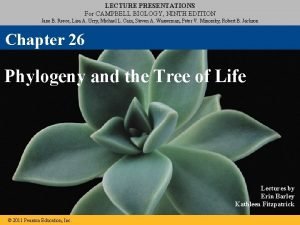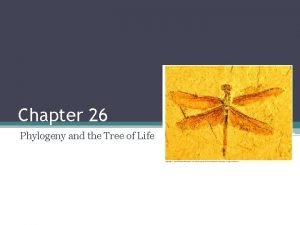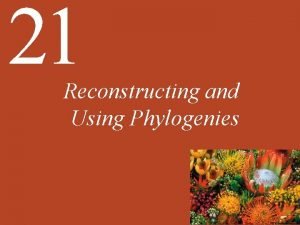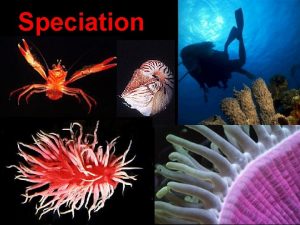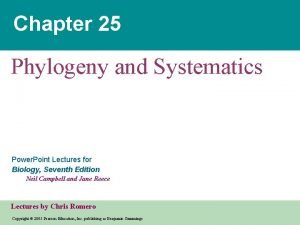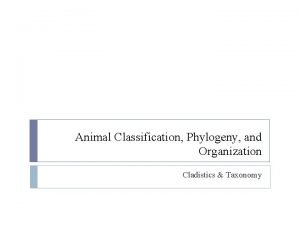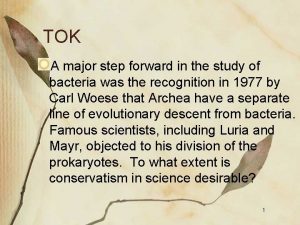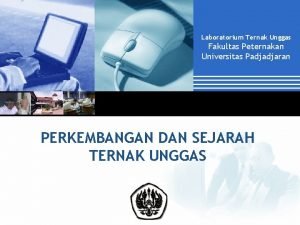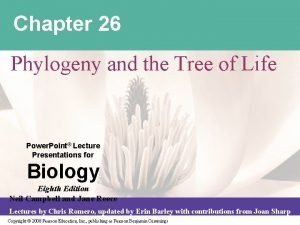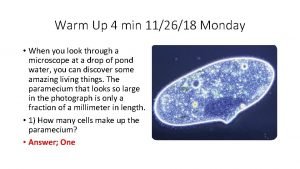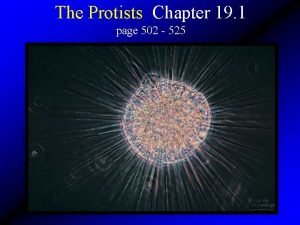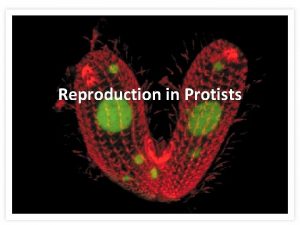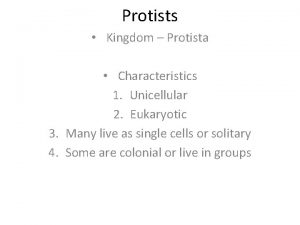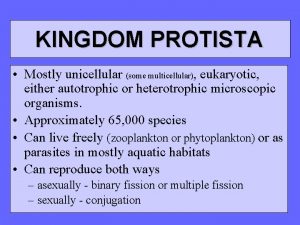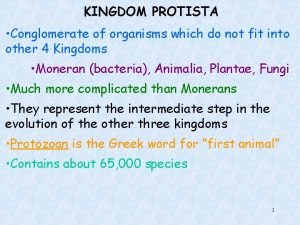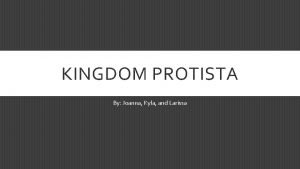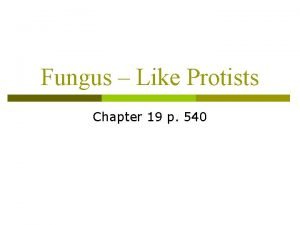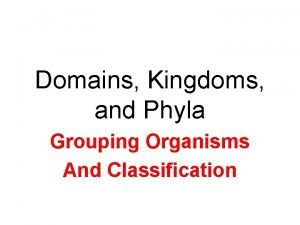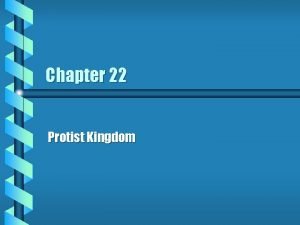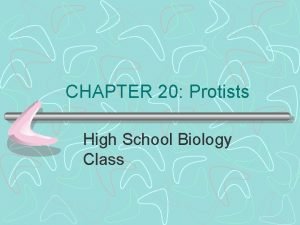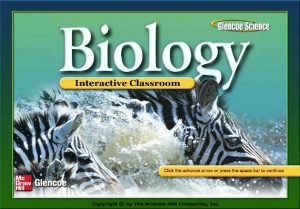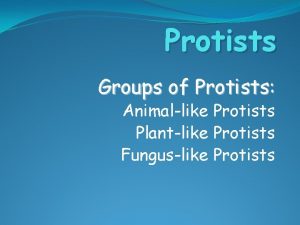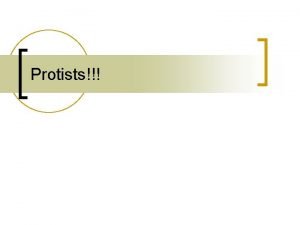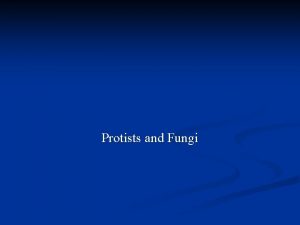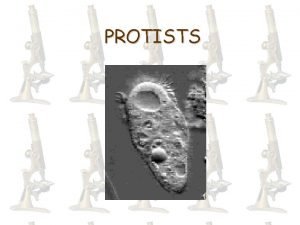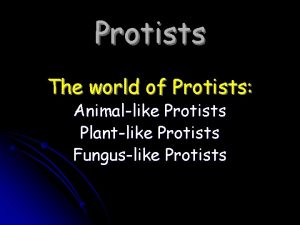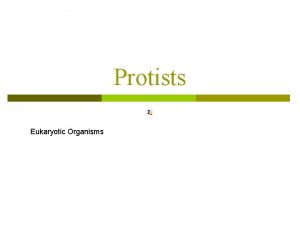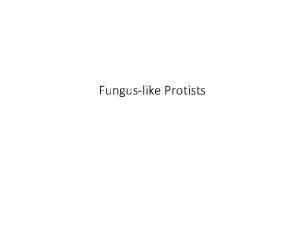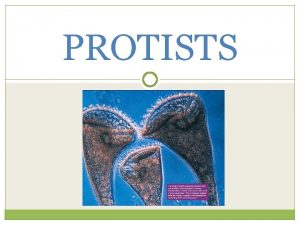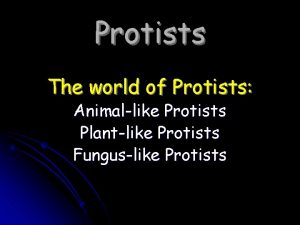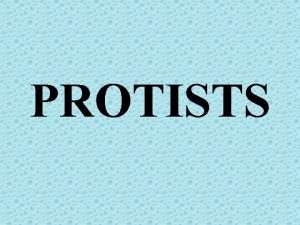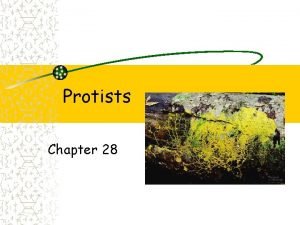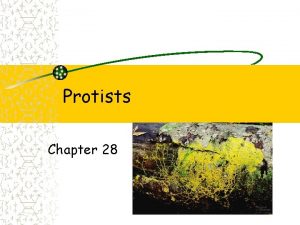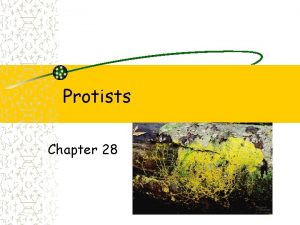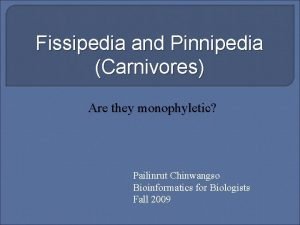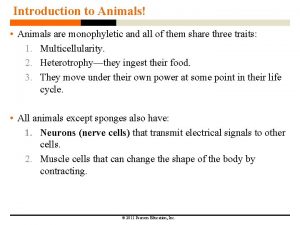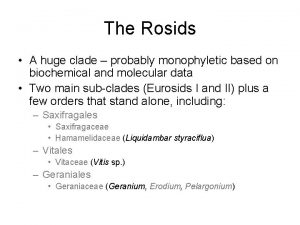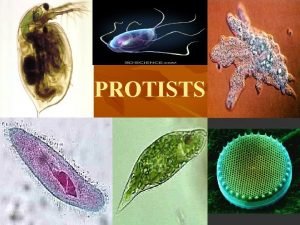Tree of Life Protists are not a monophyletic




































- Slides: 36

Tree of Life


Protists are not a monophyletic group.

Protists are especially abundant in aquatic and marine ecosystems.

Protists are foundation of food chain in aquatic and marine ecosystems.

Protists are important in human health. Malaria; 300 million cases/year, 1 million deaths. Here, Plasmodium infecting human red blood cells.

“Red tide” caused by high pops of dinoflagellates. Toxins build up in shellfish and can poison people.

Origin of eukaryotes: Endosymbiosis An organism of one species living inside an organism of another species. Early anaerobic eukaryote took up aerobic bacterium. Engulfed bacterium lived inside host, obtains carbon. Eventually became mitochondrion.

The chloroplast is also thought to originate due to endosymbiosis.

Some current species of protists have symbiotic relationships with algae.

If the endosymbiosis theory is wrong, DNA of chloroplasts and mitochondria should group with eukaryotic DNA. If the endosymbiosis theory is correct, DNA of chloroplasts and mitochondria should group with prokaryotic DNA.


Diversification of eukaryotes

Morphological diversity in protists • Compartmentalization of functions in cells • Evolution of multicellularity • Structures for support and protection • Adaptations for locomotion • Adaptations for feeding • Reproductive life styles

The average eukaryotic cell is 10 times larger in diameter than the average bacterial cell. Intracellular structures provide synthesis, transport, and distribution of molecules.

Multicellularity Volvox considered multicellular: Individual cells cannot survive on their own. Each cell has a distinct function. Some are vegetative and others undergo meiosis. Multicellularity arose independently several times.

Structures for support and protection “test” = shell Made of different substances in different lineages.

Adaptations for locomotion

Adaptations for feeding: absorptive feeding (similar to many bacteria) Parasites absorb food from host.

Adaptations for feeding: Photosynthesis (similar to many bacteria) Each pigment absorbs a unique wavelength of light.

Adaptations for feeding: Ingestive feeding Engulfing possible because no cell wall.

Adaptations for feeding: Symbiosis Example: A protozoan (a protist) contains a photosynthetic green algae (a protist).







Relationships among protists still unclear. Let’s just look at a few interesting examples, ignoring phylogeny.

Giardia is an intestinal parasite, causes diarrhea. Trichomonas causes sexually transmitted disease, infects about 2 million women/year in the U. S.

Leishmania (related to Euglena) Leishmania promastigote (green) invading a macrophage (yellow) http: //www. icp. ucl. ac. be/trop/about/subject 2. htm

Ciliates in intestinal tract of cattle & sheep. Help host digest grass. Some dinoflagellates are capable of bioluminescence.

Diatoms most important carbon producer in fresh and salt water. Tests accumulate; mined. Foraminiferans have holes in their shells through which pseudopodia emerge. Tests accumulate; chalk, limestone or marble.

Marine algae most prominent multi-cellular protists.

Slime mold. One cell with many nuclei. Decomposers, move by cell crawling. Send out spores when food scarce. Check out Tom Volk’s blob website at http: //botit. botany. wisc. edu/toms_fungi/june 99. html

The pest that caused the Irish potato famine: Spores can swim in rain water. Potato introduced into Ireland ~ 1800. Peasants had to pay rent to English landlords but subsisted on potatoes ~ 10 lbs/person/day. Population almost doubled 1800 -1845. In 1845, Phytophthora killed all potatoes in Ireland in a matter of weeks. 1 million Irish starved between 1845 -1860. 1. 5 million immigrated to east coast of U. S. To see a video, check out http: //botit. botany. wisc. edu/toms_fungi/mar 2001. html
 Monophyletic grouping
Monophyletic grouping Insidan region jh
Insidan region jh Phylogeny
Phylogeny Monophyletic paraphyletic or polyphyletic
Monophyletic paraphyletic or polyphyletic Monophyletic paraphyletic polyphyletic
Monophyletic paraphyletic polyphyletic Monophyletic group
Monophyletic group Polyphyletic vs paraphyletic
Polyphyletic vs paraphyletic Monophyletic groups
Monophyletic groups Symplesiomorphy
Symplesiomorphy Monophyletic
Monophyletic Monophyletic group
Monophyletic group Divergent evolution
Divergent evolution Symplesiomorphy vs synapomorphy
Symplesiomorphy vs synapomorphy Monophyletic group vs clade
Monophyletic group vs clade Teori polyphyletic
Teori polyphyletic Aaabbbcccdd
Aaabbbcccdd Sadlier vocabulary workshop level d unit 1
Sadlier vocabulary workshop level d unit 1 Trichomoniasis
Trichomoniasis Lesson outline what are protists
Lesson outline what are protists Sexual reproduction in paramecia is called _____.
Sexual reproduction in paramecia is called _____. Is mitosis asexual
Is mitosis asexual Protista characteristics
Protista characteristics Dinoflagellates characteristics
Dinoflagellates characteristics Why is protista the junk drawer of kingdoms
Why is protista the junk drawer of kingdoms Similarities between protists and fungi
Similarities between protists and fungi Protists unicellular or multicellular
Protists unicellular or multicellular Protist vs fungi
Protist vs fungi Kingdom protista
Kingdom protista Animal like protists
Animal like protists How do fungus like protists move
How do fungus like protists move Protist brainpop answers
Protist brainpop answers Unicellular fungi examples
Unicellular fungi examples Protists are unicellular or multicellular
Protists are unicellular or multicellular Structural and functional diversity in protists
Structural and functional diversity in protists Zygnema locomotion
Zygnema locomotion Fun fact about protists
Fun fact about protists Chapter 19 section 1 introduction to protists
Chapter 19 section 1 introduction to protists
